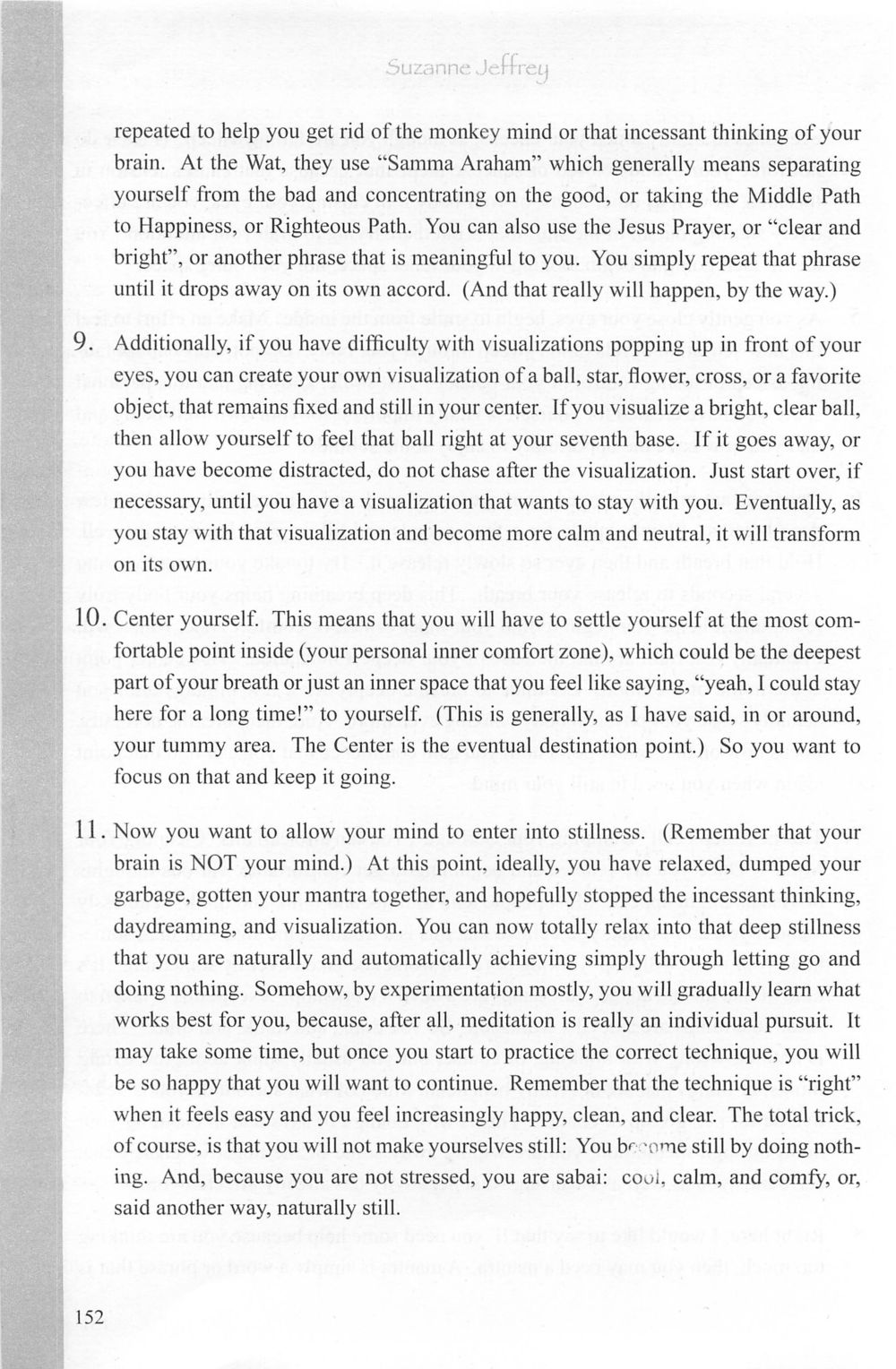Meditation Techniques for Stillness and Clarity : หน้า 151/164
The Meeting with a Dhamma Master : หน้า 151/164 Learn effective meditation techniques to calm your mind and achieve deep stillness and clarity. Discover the practice of visualization and centering.
3 ครั้ง

สรุปเนื้อหา
This passage discusses methods to quiet the monkey mind and achieve mental clarity through meditation. Techniques such as repeating a mantra, visualizing a fixed object, and centering oneself are highlighted. By concentrating on positivity and allowing the mind to enter stillness, individuals can find their personal comfort zone. It emphasizes that meditation is a personal journey that fosters happiness and clarity as one practices correctly. Ultimately, success in meditation results in a natural stillness and calmness.
หัวข้อประเด็น
-meditation techniques
-the monkey mind
-visualization practices
-centering yourself
-the importance of stillness
-personal meditation journey
ข้อความต้นฉบับในหน้า
Suzanne Jeffrey
repeated to help you get rid of the monkey mind or that incessant thinking of your brain. At the Wat, they use “Samma Araham” which generally means separating yourself from the bad and concentrating on the good, or taking the Middle Path to Happiness, or Righteous Path. You can also use the Jesus Prayer, or “clear and bright”, or another phrase that is meaningful to you. You simply repeat that phrase until it drops away on its own accord. (And that really will happen, by the way.)
9. Additionally, if you have difficulty with visualizations popping up in front of your eyes, you can create your own visualization of a ball, star, flower, cross, or a favorite object, that remains fixed and still in your center. If you visualize a bright, clear ball, then allow yourself to feel that ball right at your seventh base. If it goes away, or you have become distracted, do not chase after the visualization. Just start over, if necessary, until you have a visualization that wants to stay with you. Eventually, as you stay with that visualization and become more calm and neutral, it will transform on its own.
10. Center yourself. This means that you will have to settle yourself at the most comfortable point inside (your personal inner comfort zone), which could be the deepest part of your breath or just an inner space that you feel like saying, “yeah, I could stay here for a long time!” to yourself. (This is generally, as I have said, in or around, your tummy area. The Center is the eventual destination point.) So you want to focus on that and keep it going.
11. Now you want to allow your mind to enter into stillness. (Remember that your brain is NOT your mind.) At this point, ideally, you have relaxed, dumped your garbage, gotten your mantra together, and hopefully stopped the incessant thinking, daydreaming, and visualization. You can now totally relax into that deep stillness that you are naturally and automatically achieving simply through letting go and doing nothing. Somehow, by experimentation mostly, you will gradually learn what works best for you, because, after all, meditation is really an individual pursuit. It may take some time, but once you start to practice the correct technique, you will be so happy that you will want to continue. Remember that the technique is “right” when it feels easy and you feel increasingly happy, clean, and clear. The total trick, of course, is that you will not make yourselves still: You become still by doing nothing. And, because you are not stressed, you are sabai: cool, calm, and comfy, or, said another way, naturally still.
152
หน้าหนังสือทั้งหมด

1

2

3

4

5

6

7

8

9

10

11

12

13

14

15

16

17

18

19

20

21

22

23

24

25

26

27

28

29

30

31

32

33

34

35

36

37

38

39

40

41

42

43

44

45

46

47

48

49

50

51

52

53

54

55

56

57

58

59

60

61

62

63

64

65

66

67

68

69

70

71

72

73

74

75

76

77

78

79

80

81

82

83

84

85

86

87

88

89

90

91

92

93

94

95

96

97

98

99

100

101

102

103

104

105

106

107

108

109

110

111

112

113

114

115

116

117

118

119

120

121

122

123

124

125

126

127

128

129

130

131

132

133

134

135

136

137

138

139

140

141

142

143

144

145

146

147

148

149

150

151

152

153

154

155

156

157

158

159

160

161

162

163

164
หนังสือที่เกี่ยวข้อง
Load More
